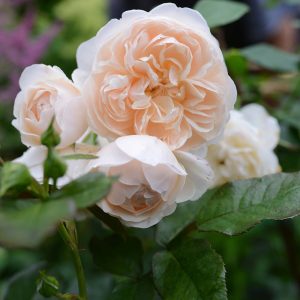Description
Giant Italian parsley, also known as flat-leaf parsley or Italian parsley, is a popular culinary herb that is widely used in Mediterranean and Middle Eastern cuisines. This biennial herb has flat, dark green leaves with a slightly peppery taste and a robust aroma that is stronger than that of curly parsley. It can grow up to 70cm in height and has an upright growth habit. The plant produces small, yellow-green flowers in its second year of growth, attracting bees and other pollinators to the garden. Giant Italian parsley is a versatile herb that can be used fresh or dried in a variety of dishes, including soups, stews, salads, and sauces. It also makes a great garnish for platters and can be used to add flavour and nutrition to smoothies and juices. This herb grows well in full sun or partial shade and prefers well-drained soil. It can be grown in containers, as well as in herb gardens, vegetable patches, and mixed borders. Giant Italian parsley is also known to repel some pests and can be used as a companion plant to protect other crops.
Key Facts
- Common Name(s):Giant Italian Parsley
- Hardiness:Fully hardy
- How big will I get? Petroselinum crispum can grow to a height of 0.5m and a spread of 0.5m.
- Did You Know That:The ancient Greeks believed that parsley could bring back the dead and would often place it on graves?
Plant Calendar
A rough guide to how this plant will change through the year.
| Jan | Feb | Mar | Apr | May | June | July | Aug | Sept | Oct | Nov | Dec | |
| Flowering Time |   |
  |
||||||||||
| Foliage Colour |  |
 |
 |
 |
 |
 |
 |
 |
 |
 |
 |
 |
| J | F | M | A | M | J | J | A | S | O | N | D |
  |
  |
||||||||||
 |
 |
 |
 |
 |
 |
 |
 |
 |
 |
 |
 |
Care Guide

Soil Requirements
Petroselinum crispum prefers moist but well-draining soil. This plant can grow in soil with a wide range of pH levels, it is not picky about the pH level of the soil.

Best Position
Petroselinum crispum can handle either an exposed or a sheltered position and can cope with either full sun or partial shade.

Maintenance
Petroselinum crispum should be cut back after it finishes flowering will promote growth the following year by redirecting energy from seed production and foliage maintenance to root growth.

Pest, Diseases and Wildlife
Petroselinum crispum can have problems with aphids, it can be vulnerable to certain diseases such as leaf spot. It is also known to attract bees. It is toxic to cats and dogs.
![Petroselinum crispum [Giant Italian Parsley]](https://leafwise.co.uk/wp-content/uploads/2022/10/Petroselinum-crispum-Giant-Italian-Parsley.jpg)




